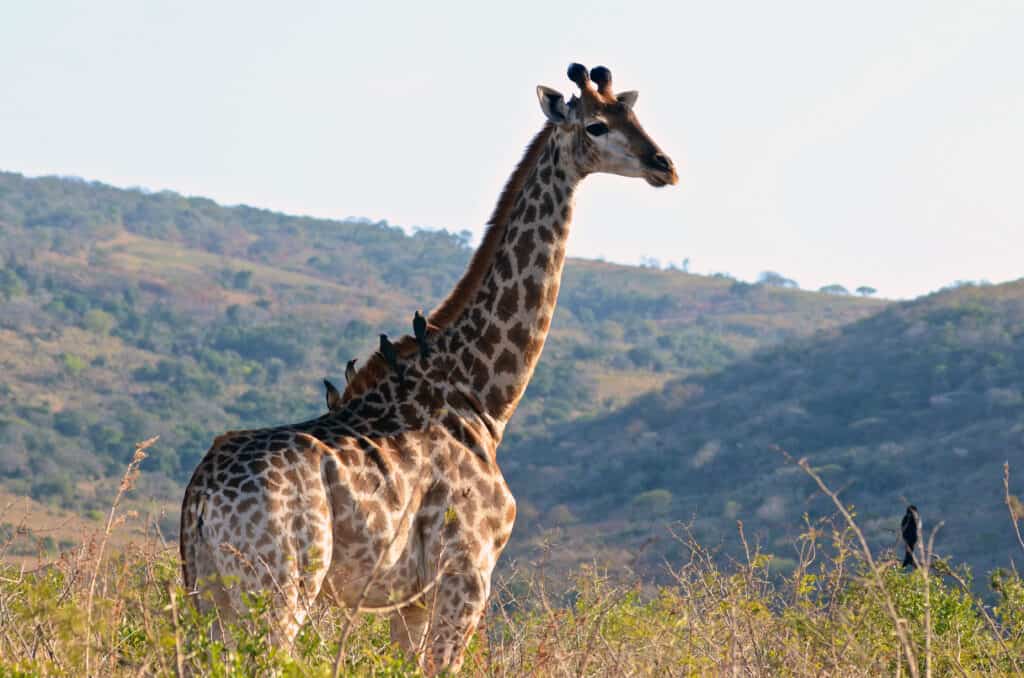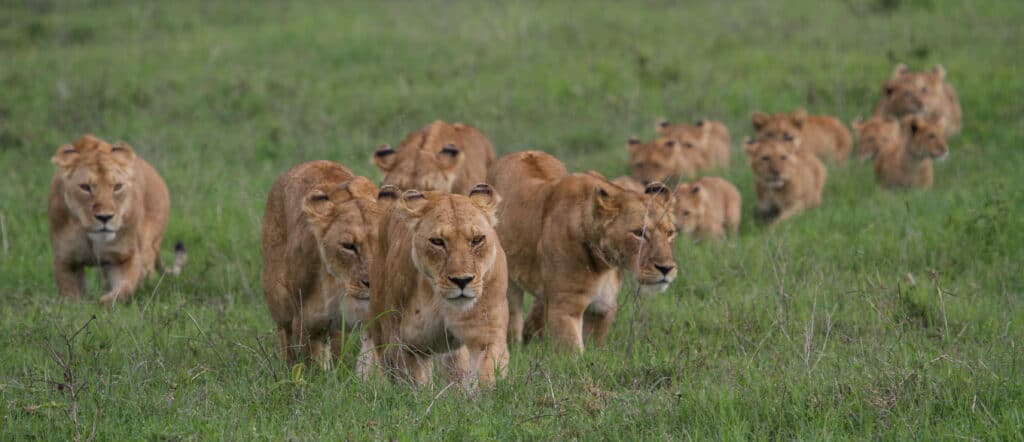Giraffes Have More Than Extreme Height Going for Them
Kruger National Park in South Africa is home to a plethora of incredible wild animals. Everything from lions to tigers to giraffes roams around the land here. A video showcasing a close-up shot of a giraffe truly shows how giant these creatures truly are.
Click to Witness the Intense Battle Below!
At a maximum height of 18 feet, the giraffe is the tallest mammal in the world. A large portion of its height can be attributed to its extraordinarily long neck. The long neck has led to a complicated blood circulation system that zoologists are still trying to fully comprehend.

Giraffes are the tallest mammals in the world – reaching heights of 18 feet.
©Slow Walker/Shutterstock.com
Mature males typically stand at around 15 feet, while adult females do so at around 13 feet. Although females typically weigh between 1,763 and 1,984 pounds, large males can weigh a whopping 2,645 pounds. Males and females both have dark brown markings on their tan skin that are lighter on the females. Shorthorns coated in the skin are seen in both males and females.
Being somewhat gregarious creatures, giraffes occasionally gather in herds. There isn’t much group camaraderie, though. Males are restless and wander between groups of females, while young remain with a few adult females. Male giraffes are always roving in pursuit of suitable females because they do not have a set breeding season.
It’s exciting to watch males compete with one another for supremacy and the right to engage with females. They battle by tying their long, strong necks around one another and using them to hit an opponent’s torso. The loser is knocked off balance, and seldom are major injuries sustained as a result of the clashes.
Protecting Yourself in the Wild

Lions usually pass over giraffes due to their size but occasionally a pride will try to wear them down.
©Adalbert Dragon/Shutterstock.com
Giraffes are typically calm creatures that conduct their daily activities with a sense of calm. They frequently snort when startled or when threatened by predators. The giraffe’s front foot can kick with more than enough force to kill a lion, making it its most potent defensive weapon.
Visitors in Kruger National Park spotted a giraffe towering over a pair of lionesses. It’s common for the lionesses to hunt and take down an animal for the entire pride to eat. This giraffe karate kicks the lions off multiple times.
It’s almost comical how nonchalant it kicks the massive felines away. The action resembles a human simply swatting away a fly. At one point, one of the lionesses attempts to take the giraffe to the ground by jumping on it from behind.
Alas, one swift kick to the gut sends this cat flying back to the ground. It’s quite rare for a lion to successfully take down a giraffe due to its sheer size. Additionally, thanks to their long legs, these animals can run up to 35 miles per hour in short spurts.
“It seems that part of their strategy was to exhaust the giraffe and finish the business after dark, taking advantage of their good night vision, and probably when the males are back from patrolling duties so they could add their strong muscle and hefty bodies,” says one tourist watching in person.
Thank you for reading! Have some feedback for us? Contact the AZ Animals editorial team.








